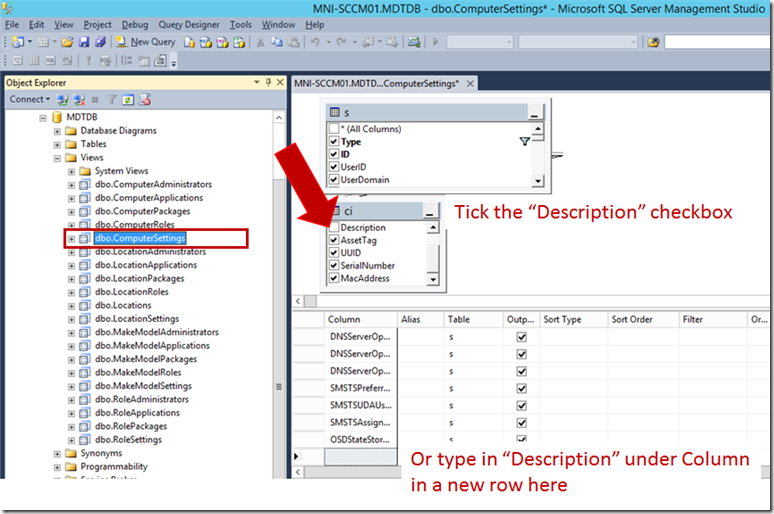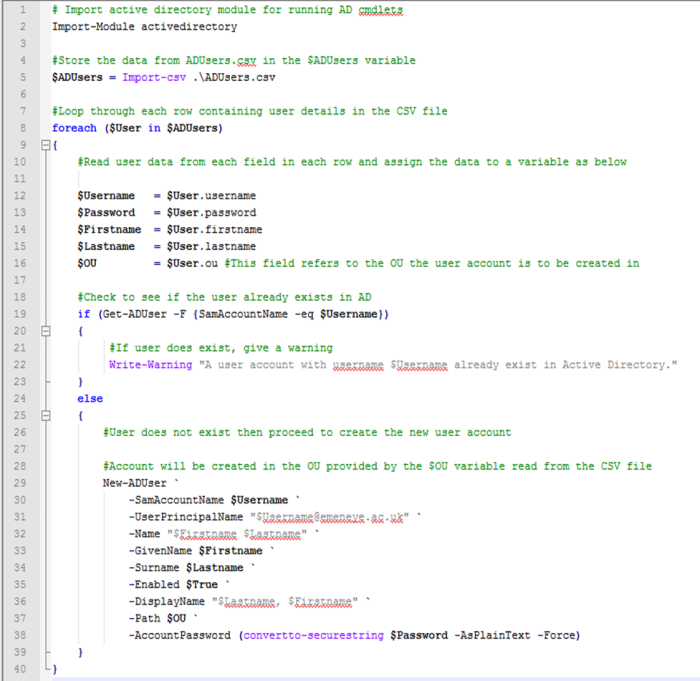The short story:
Launch SQL Server Management Studio, expand the MDT database > Views > right-click on dbo.ComputerSettings and click on “Design”, tick the “Description” column in the CI table in the View.
The long story:
During my experiments with using PowerShell to automate Windows imaging and deployment tasks I’ve been working with the MDT database module, provided by Michael Niehaus from Microsoft.
I was disappointed to find the Get-MDTComputer cmdlet is broken somewhat, as in you can’t retrieve a computer record from the database matching a description. This is what the error message says when you try:
I thought I’d take a look at the Get-MDTComputer function in the PowerShell module and saw that the function was doing nothing more than building a SQL statement and querying the MDT database. Specifically, it was querying the “ComputerSettings” table as shown below:
This, along with the error message we saw earlier mentioning “Invalid column name ‘Description'”, led me to fire up the SQL Server Management Studio to examine the “ComputerSettings” table, only to find there isn’t a table with that name but there was a “View” called “ComputerSettings”.
I right-clicked the “ComputerSettings” View and selected “Design” and immediately saw what the issue was here. It was apparent that the problem was that the “ComputerSettings” View didn’t include the “Description” column from the ComputerIdentity table.
So the solution is to tick the checkbox next to the “Description” column in the CI table in the View:
And here you can see the Get-MDTComputer cmdlet working with the –Description parameter:






